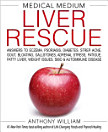Norovirus: Symptoms, Solutions, and Global Health Issues of the Norwalk Virus
About this ebook
The virus was first identified in 1972 after an outbreak in Norwalk, Ohio, which is where it received its name. Since then, Norovirus has been found to be the primary culprit behind seasonal outbreaks of stomach flu. It is estimated that millions of people are infected with Norovirus each year, leading to a considerable number of hospitalizations and, in severe cases, deaths, particularly among vulnerable populations such as the elderly, young children, and those with weakened immune systems.
One of the most notable features of Norovirus is its resilience. The virus can survive on surfaces for extended periods and is resistant to many common disinfectants, which contributes to its ease of transmission. The primary mode of transmission is through the fecal-oral route, either by consuming contaminated food or water or by coming into contact with infected surfaces or people. Additionally, person-to-person transmission is highly efficient, especially in confined spaces where individuals are in close contact, such as healthcare facilities, schools, and cruise ships.







